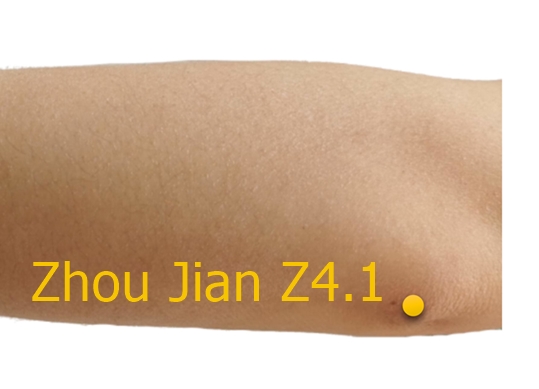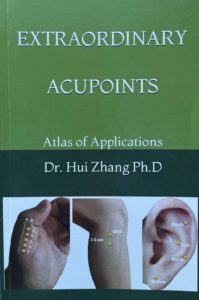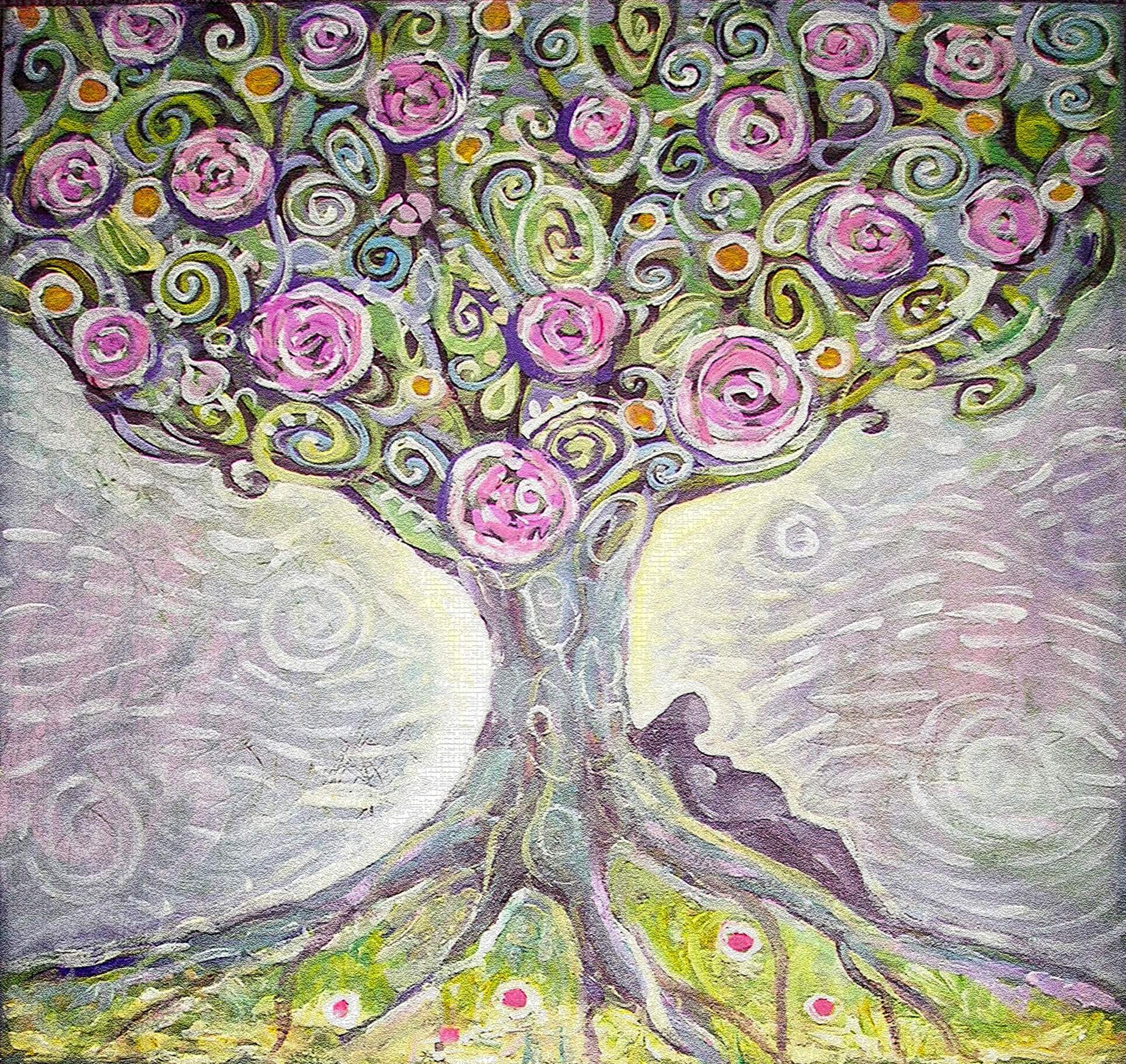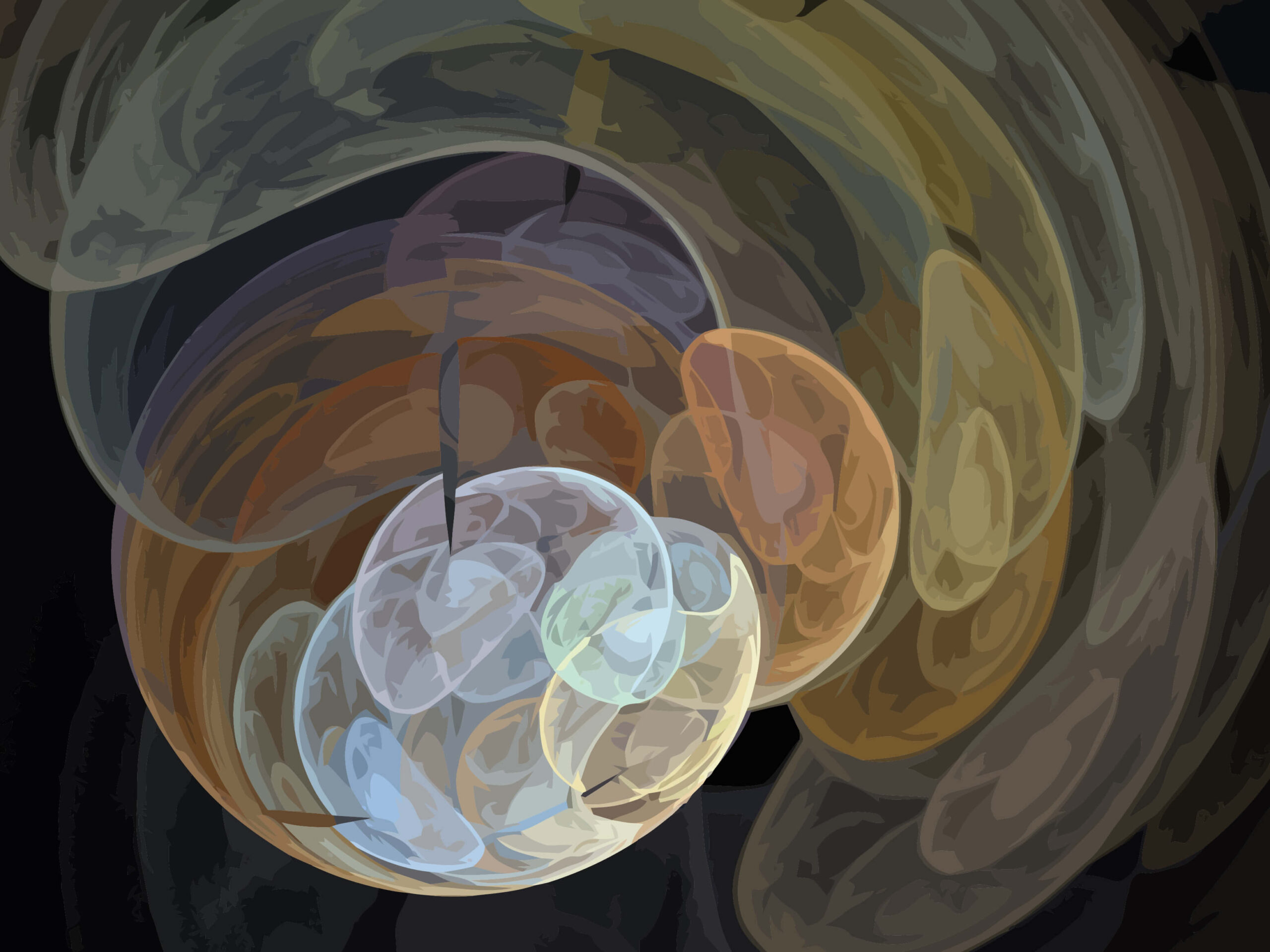Zhou Jian 肘尖 Elbow Tip (TEA - Z4.1)
An excerpt from "Extraordinary Acupoints: Atlas of Applications" by Dr Hui Zhang, PhD
About Traditional Extraordinary Acupoints (TEA)
I believe all acupuncturists use some of the traditional extraordinary acupoints, among which Yin Tang, Tai Yang, An Mian and Si Shen Cong might be the most popular.
The earliest record of EA i.e. Qi Shu (奇腧) which is literally translated as extraordinary acupoints, dates back to the Huang Di Nei Jing (The Yellow Emperor’s Inner Classic). In the Bei Ji Qian Jin Yao Fang (Prescriptions Worth Thousand Gold for Emergencies) published in 652 A.D. by Sun Simiao, 187 EA were recorded. Just to give a few more examples, in the Zhen Jiu Ji Cheng (Acupuncture and Moxibustion Collection) published in 1874 A.D. by Liao Runhong, 144 EA were recorded, in the Zhen Jiu Jing Wai Qi Xue Tu Pu (Illustration of Extraordinary Acupoints) 588 EA. In 2018, the Zhen Jiu Jing Wai Qi Xue Tu Pu (Illustration of Extraordinary Acupoints) was re-published, and it covered 1649 EA, among which 345 EA are located on the 14 channels, and 1213 are not (Hao, 2018).
Z4.1 Zhou Jian 肘尖 Elbow Tip (TEA)
(“Extraordinary Acupoints: Atlas of Applications” Page 70)
Location
Ex-Ue-1, on the tip of the olecranon process.
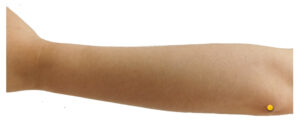
Manipulation
Warm with moxibustion only, 5-7 moxibustion cones or moxibustion cigar 20-30 min.
Category
Spine (Neck)
Indications
(1) Neck: scrofula, carbuncles and furuncles, and deep-rooted ulcers
(2) Intestinal abscess
Commentary
The acupoint is located in the region of Tian Jing – SJ10, the He-sea, and earth acupoint of the Sanjiao channel. SJ10 transforms phlegm and dissipates nodules, regulates Qi and descends rebellious Qi. The diseases on the neck e.g. scrofula are commonly diagnosed as the combination of Qi stagnation, heat, phlegm, and blood stasis. These rebellious pathogens originated from the damp, damp-heat, phlegm of the middle Jiao and liver Qi stagnation and blood stasis in the lower Jiao, run upwards to the neck along the Sanjiao. Sanjiao belongs to minister fire, therefore, Sanjiao acupoints can be selected to treat various stagnation heat due to damp-heat, Qi stagnation, phlegm heat, blood stasis, and external pathogens.
According to the Extraordinary Connections between Zang and Fu Organs, Sanjiao is closely related to the kidney. In MTA acupoints on the Sanjiao channel are chosen to treat kidney, spine, and Du channel diseases. Therefore, the acupoint is categorized as spine. Some scrofula patients present with kidney and liver Yin deficiency symptoms.
The theory of Extraordinary Connections between Zang and Fu organs (臟腑別通) was first recorded in Yi Xue Ru Men (醫學入門Guide Book for Medicine), written by Li Ting (李梃) and published in 1575. Extraordinary relationships are established in this system, including lung – bladder, spleen – small intestine, heart – gallbladder, kidney – Sanjiao, liver – large intestine, and pericardium – stomach.
Generally speaking, the He-sea acupoint drains damp-heat, which is the common pathogen for abscess, carbuncle and furuncles, ulcers, and scrofula. According to the principle that depressed fire must be dispersed[1], moxibustion is applied to disperse the heat due to damp accumulation. However, if heat is caused by Yin deficiency, moxibustion shouldn’t be used.
Interestingly, other points in the elbow also treat diseases of the neck. Penetrating from LI11 to LI14 with 6 cun lang needle is an ancient technique to soften nodules and tumors in the neck. LU11, LU5, and SI8 also treats various throat diseases.
[1] “Depressed fire must be dispersed”, Chapter 71, Elementary Questions (Su Wen, Liu Yuan Zheng Ji Da Lun)
About the Book
Explanations and commentaries of acupoints’ indications are based on its location and internal connection to Zang and Fu organs and various structures of the body e.g. brain, uterus, throat, etc. Most of the explanations are enlightened by my research of Ling Shu (灵枢, Spiritual Pivot), MTA, and bio-medicine.
Explanations of the indications were based on EA’s location and internal connections to Zang and Fu organs and various structures of the body e.g. brain, uterus, throat etc. Most of the explanations were enlightened by my research of Ling Shu (灵枢, Spiritual Pivot) , MTA, neurology, and biomedicine. Actually, plenty of EA can be regarded as an extension of the standard acupoints. For instance, Zu Er Huo (Z6.1), including Huo Zhu and Huo Ying, are located in the region of Tai Chong – LR3 and their indica-tions are closely related to Tai Chong – LR3, even though they vary from it.
How to get the book “Extraordinary Acupoints: Atlas of Applications”?
In the EU: Press here
Exclusive TCM Academy 20% discount with promotion code: tcm academy.
Outside the EU: Check your local Amazon online shop.
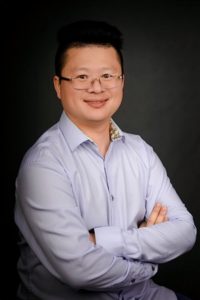
Hui Zhang applies and teaches various acupuncture methods including, TCM acupuncture, WHO Standard Scalp Acupuncture, AAP (arm acupressure points), Master Tung’s Acupuncture, Pingheng Acupuncture, pestle needles (Taoist Acupuncture), Heat Sensitive Moxibustion, Tui Na (Chinese Medical Massage), Guasha, Cupping, Electricity Acupuncture, and Chinese Herbal Medicine, Chinese Medicine Psychology, etc..
He also uses Evidence-based methods in practice.







